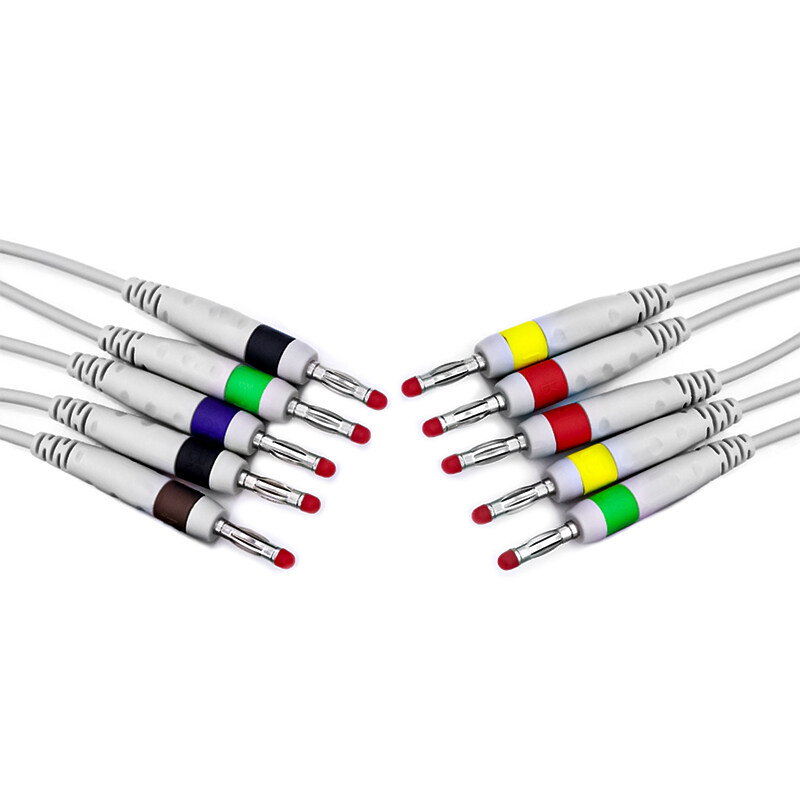Email format error
Email cannot be empty
Email already exists
6-20 characters(letters plus numbers only)
The password is inconsistent
Email format error
Email cannot be empty
Email does not exist
6-20 characters(letters plus numbers only)
The password is inconsistent

News at Linke
News from National Cable And Wire Manufacturing Company.

Sparkling Solutions: Mastering the Art of Cleaning ECG Cables and Leadwires
Introduction:
In the world of medical diagnostics, electrocardiogram (ECG) cables and leadwires play a pivotal role in capturing accurate readings of the heart's electrical activity. However, maintaining their cleanliness is often overlooked despite its crucial significance. Fear not, as we embark on a journey to uncover the secrets of cleaning ECG cables and leadwires, ensuring not just hygiene but also optimal performance.
Understanding the Importance:
Before diving into the cleaning process, let's grasp why it's so vital. Imagine a painter trying to create a masterpiece with dirty brushes; the outcome would be flawed. Similarly, ECG cables and leadwires, when contaminated, can yield inaccurate readings, jeopardizing patient care. Hence, keeping them pristine is paramount for reliable diagnoses.
Materials Needed:
Gather your arsenal! To embark on our cleaning quest, you'll require a few essentials:
1. Mild soap or detergent: Opt for gentle cleansers to avoid damaging the cables.
2. Warm water: Provides the ideal temperature for effective cleaning.
3. Soft cloth or sponge: Ensure they are non-abrasive to prevent scratching.
4. Isopropyl alcohol: a potent disinfectant to eradicate stubborn germs.
5. Towels: for drying and ensuring no moisture lingers post-cleaning.
Step-by-Step Cleaning Guide:
Now, let's delve into the nitty-gritty of cleaning ECG cables and leadwires:
1. Preparation: Unplug the cables from the machine and detach the leadwires carefully. Always refer to the manufacturer's instructions for guidance.
2. Initial Wipe Down: Start by wiping the cables and leadwires with a soft, dry cloth to remove any surface dust or debris. This step prepares them for deeper cleaning.
3. Soap and Water Bath: Create a soapy solution using mild detergent and warm water. Submerge the cables and leadwires, gently swishing them around to dislodge any grime. Be cautious not to immerse any connectors or junctions.
4. Rinse Thoroughly: After a good soak, rinse the cables and lead wires under running water to wash away the soap residue. Ensure all traces of detergent are removed to prevent skin irritation during future use.
5. Disinfection Dance: To annihilate lurking germs, dip a clean cloth or sponge in isopropyl alcohol and carefully wipe down the cables and leadwires. Pay extra attention to high-touch areas.
6. Drying Ritual: Lay out the cables and leadwires on a clean towel, allowing them to air dry completely. Avoid using heat sources like hairdryers, as excessive heat may damage the components.
7. Reassembly and Inspection: Once dry, reassemble the cables and leadwires, ensuring all connections are secure. Give them a visual inspection to spot any signs of wear or damage that may warrant replacement.
Maintenance Tips:
Congratulations! You've mastered the art of cleaning ECG cables and leadwires! To maintain their pristine condition, here are a few tips:
Clean regularly. Establish a routine cleaning schedule to prevent buildup.
Handle with care: Avoid bending or twisting the cables excessively to prolong their lifespan.
Store properly: Keep the cables and leadwires in a clean, dry environment away from direct sunlight or moisture.
Conclusion:
In the realm of medical diagnostics, cleanliness is indeed next to accuracy. By mastering the art of cleaning ECG cables and leadwires, you not only ensure hygienic practices but also contribute to precise diagnoses, ultimately enhancing patient care. So, roll up your sleeves and let your cleaning prowess shine—your patients' hearts will thank you!

